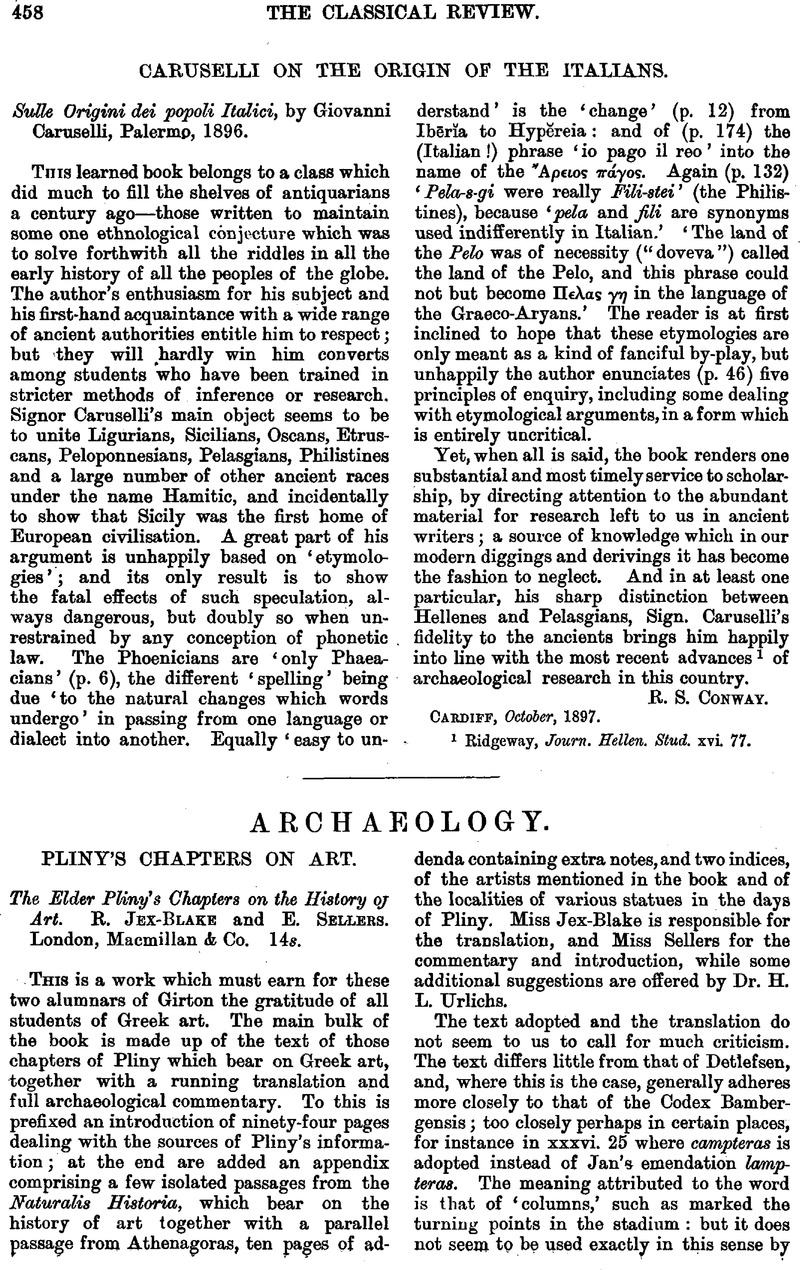Article contents
Pliny's Chapters on Art
Published online by Cambridge University Press: 27 October 2009
Abstract

- Type
- Archaeology
- Information
- Copyright
- Copyright © The Classical Association 1897
References
page 459 note 1 We have noticed a few instances in which the translation seems at least questionable, if not absolutely wrong; e.g. 33,156, in enibleinate is apparently translated ‘on the interior’; 34, 66, constantiam surely means ‘firmness’ rather than ‘perseverance’; 35, 126, eam picturam translated ‘technical innovation’ should rather be ‘that design.’ 35, 153, to refer Idem back to Butades, though it may be necessary, at least requires some defence.
page 460 note 1 In dealing with the story of the clipeus at Athens painted by Pheidias, Miss Sellers seems to raise unnecessary difficulties. Two explanations are equally possible: (a) the clipeus was that of Athene Parthenos, which he designed before, and probably painted, after was carved: cf. the story of Parrhasius and Mys, and the epigram quoted Ath. xi. p. 782 B, ![]() ; or (b) the clipeus was round tablet for a picture, cf. Face. Fore, s.v.
; or (b) the clipeus was round tablet for a picture, cf. Face. Fore, s.v.
- 1
- Cited by


